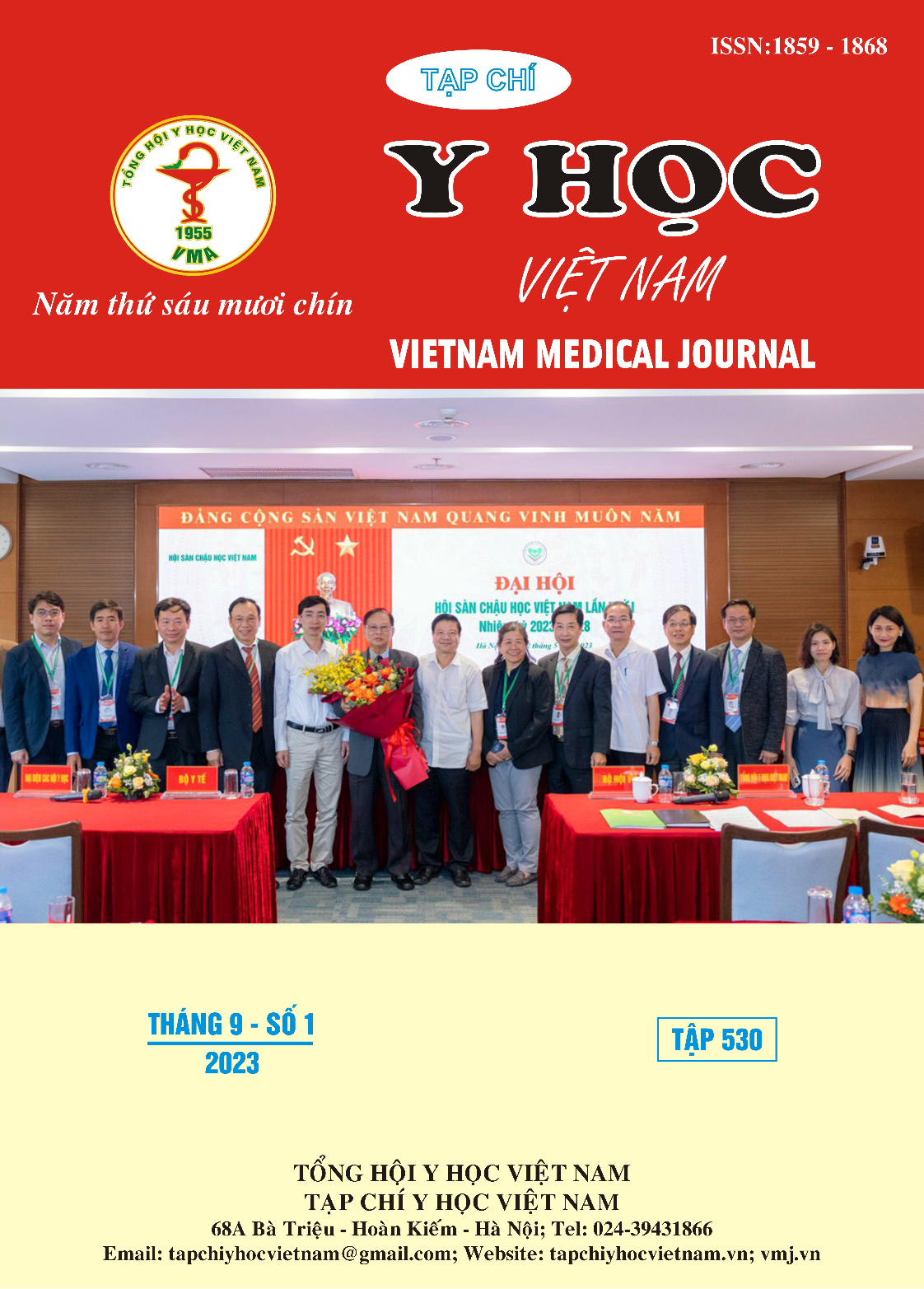KẾT QUẢ ĐIỀU TRỊ GÃY LIÊN MẤU CHUYỂN XƯƠNG ĐÙI BẰNG ĐINH PFNA KHÔNG DÙNG BÀN CHỈNH HÌNH TẠI BỆNH VIỆN THỐNG NHẤT
Nội dung chính của bài viết
Tóm tắt
Mục tiêu: đánh giá kết quả điều trị gãy liên mấu chuyển xương đùi bằng đinh PFNA không sử dụng bàn chỉnh hình tại Bệnh viện Thống Nhất. Đối tượng và phương pháp nghiên cứu: nghiên cứu hồi cứu, mô tả cắt ngang không đối chứng 28 bệnh nhân gãy liên mấu chuyển xương đùi được phẫu thuật kết hợp xương bằng đinh PFNA. Kết quả: đa số bệnh nhân là nữ ở độ tuổi trên 60, thường do tai nạn sinh hoạt, thời gian theo dõi ít nhất 3 tháng dài nhất là 6 tháng, đánh giá bằng thang điểm Harris khả quan: tốt và rất tốt đạt 90,4 ± 4,3, lượng máu mất trung bình 324,4 ± 145,7, BN có thể tập đi lại có sử dụng khung hỗ trợ sau 5 - 10 ngày. Kết luận: Phẫu thuật điều trị gãy LMCXĐ bằng đinh PFNA tư thế nằm nghiêng không dùng bàn chỉnh hình cũng có nhiều ưu điểm tương đương so với tư thế nằm ngửa dùng bàn chỉnh hình.
Chi tiết bài viết
Từ khóa
gãy liên mấu chuyển xương đùi, đinh PFNA, bàn chỉnh hình
Tài liệu tham khảo
2. N. Veronese và S. Maggi (2017), "Epidemiology of Hip Fracture and Social Costs", Orthogeriatrics, tr. 19-30
3. N. Adulkasem, P. Phinyo, J. Khorana, D. Pruksakorn, and T. Apivatthakakul, “Development of clinical prediction rules for one-year postoperative functional outcome in patients with intertrochanteric fractures: the intertrochanteric fracture ambulatory prediction (IT-AP) tool,” International Journal of Environmental Research and Public Health, vol. 19, no. 1, p. 177, 2021
4. Li Xue, Li Zha, Qin Chen, Yi-jian Liang, Kang-ren Li, Zheng Zhou, Jin-long Guan,Hui Qin, and You-ping Li, "Randomized Controlled Trials of Proximal Femoral Nail Antirotation in Lateral Decubitus and Supine Position on Treatment of Intertrochanteric Fractures", Clinical Study of Hindawi Publishing Corporation, The ScientificWorld Journal, Volume 2013, Article ID 276015, 7 pages, http:// dx.doi.org/ 10.1155/2013/276015
5. Kempf I, Grosse A, Taglang G, Favreul E. Gamma nail in the treatment of closed trochanteric fractures. Results and indications of 121 cases. Orthop Traumatol Surg Res. 2014 Feb; 100(1):75-83. doi: 10.1016/ j.otsr.2013.12.013. Epub 2014 Jan 20. PMID: 24456767.
6. I. Aktselis, D. Papadimas, E. Fragkomichalos, A. Deligeorgis, and C. Kokoroghiannis, “Intramedullary nailing of trochanteric fractures—operative technical tips,” Injury, vol. 43, no. 6, pp. 961–965, 2012
7. Pastor, I. Zderic, D. Gehweiler et al., “Biomechanical analysis of recently released cephalomedullary nails for trochanteric femoral fracture fixation in a human cadaveric model,” Archives of Orthopaedic and Trauma Surgery, 2021
8. Sadic S, Custovic S, Jasarevuc M, Fazlic M, Krupic F. Proximal Femoral Nail Antirotation in Treatment of Intertrochanteric Hip Fractures: a Retrospective Study in 113 Patients. Med Arch. 2015 Dec;69(6):352-6. doi: 10.5455/medarh.2015.69.353-356. PMID: 26843723; PMCID: PMC4720467.
9. Zhengbing Su, Minghui Yang, Gang Luo, Linlin Liang, and Yong Hao, "Treatment of Elderly Femoral Intertrochanteric Fracture by InterTan Intramedullary Nail and PFNA" Research Article Hindawi, Evidence-Based Complementary and Alternative Medicine, Volume 2022, Article ID 5020960, 7 pages, https:// doi.org/10.1155/2022/5020960


